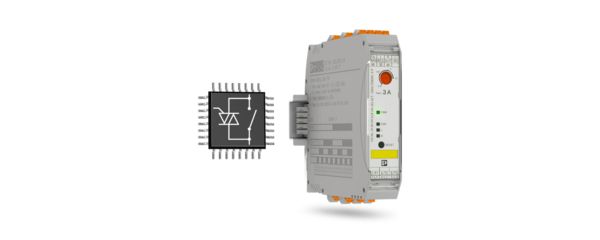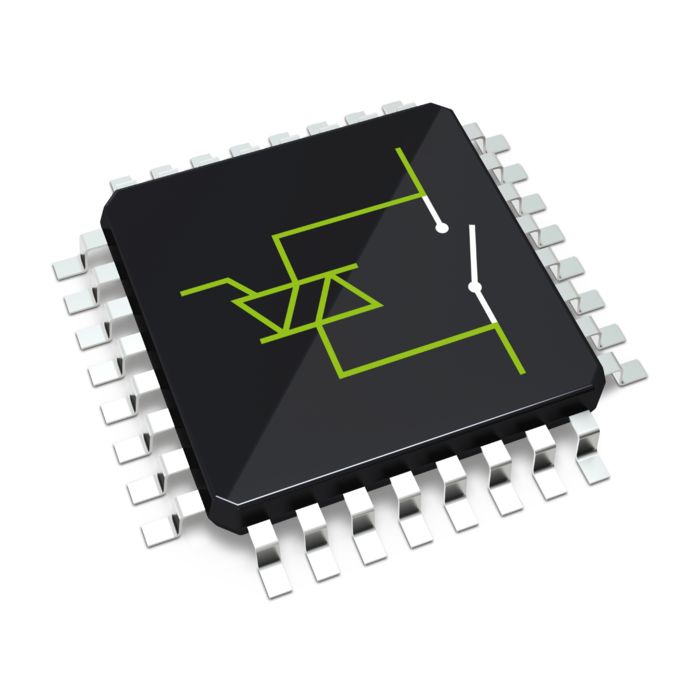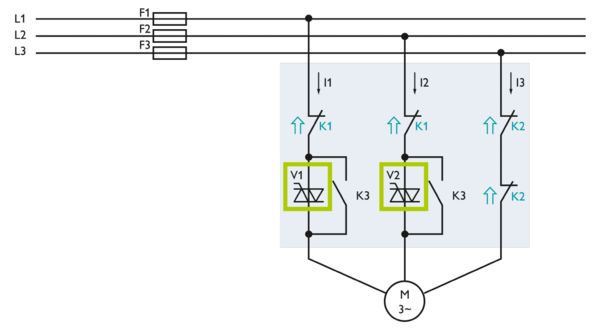CONTACTRON hybrid technology

In automation technology, the three-phase asynchronous motor is one of the most widely used motors. It is used to implement many processes and movements, some of which are complex and safety-related.
CONTACTRON hybrid technology is a microprocessor-controlled combination of low-wear semiconductor technology and robust relay technology. Here, the reversing contactor circuit is implemented in an overall width of just 22.5 mm.
The semiconductors execute the wear-prone on and off switching operations, while the relays only conduct low-loss current. This enables soft switching and considerably reduces the load on the relay contacts.

CONTACTRON processor
Your advantages at a glance
- Less space required in the control cabinet due to the narrow design: 22.5 mm overall width saves ~75% of space
- Approximately 30 million switching cycles for superior system availability
- Up to 10 times longer service life due to gentle switching with CONTACTRON hybrid technology, the combination of low-wear semiconductor technology, and rugged relay technology
- Easy wiring due to integrated locking circuit and load wiring

Comparison to mechanical switching devices (contactors)
Mechanical switching devices, so-called contactors, usually switch drives on and off. A motor protection relay is used to monitor the motor current for overload or blockages which stops the motor in the event of an error. If one drive is required for both directions of rotation, the circuit technology function – swapping two outer conductors – must be performed via an additional switching element.
If the application additionally has to fulfil the requirements for functional safety, e.g. in accordance with Cat. 3 or PL e, one or two additional switching elements must be connected in series. In total, many drive applications thus require four or five devices, which must be planned, wired, and connected accordingly.
How does the CONTACTRON hybrid technology work?
Step 1:
Relays K1 and K2 are closed. Since V1 and V2 have not yet switched, there is still no current flowing in phases l1, l2 and l3.
Step 2:
Semiconductors V1 and V2 are switched on, transferring the inrush current. Currents l1, l2, and l3 now flow, causing the motor to run. During this short time, semiconductors V1 and V2 create some power dissipation, which is given off as heat.
Step 3:
To reduce this power dissipation, the semiconductors are now bridged with bypass relay K3. As a result, the semiconductors remain cold. For switching-off, the process is identical only in reverse.

